手写数字问题
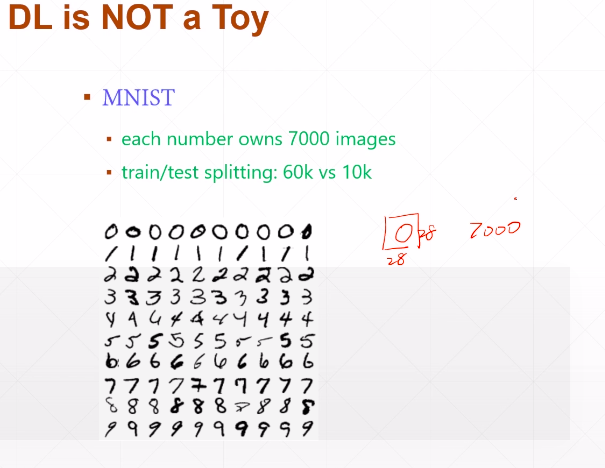
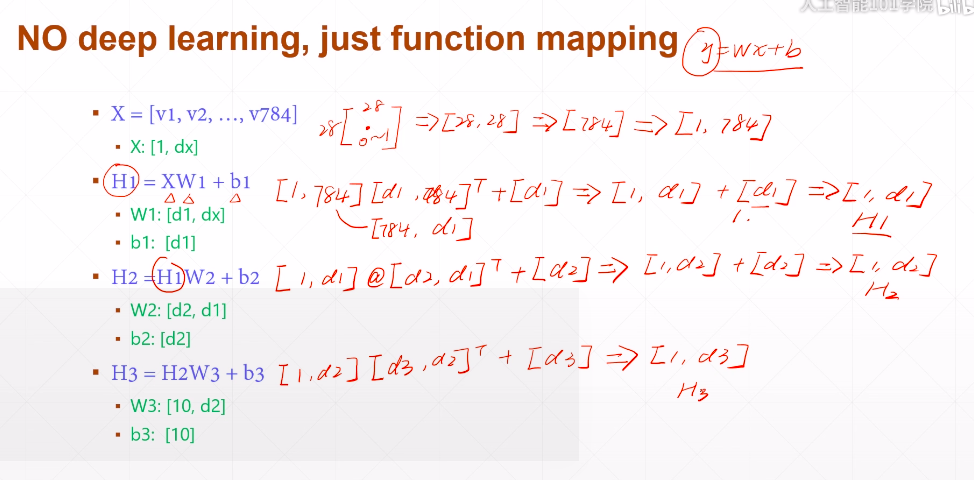
H3:[1,1] #第一个1表示照片数量,第二个1表示0~9的一个数字 one-hot(上图)就没有1<2<3的大小关系了 #编码方式
欧式距离

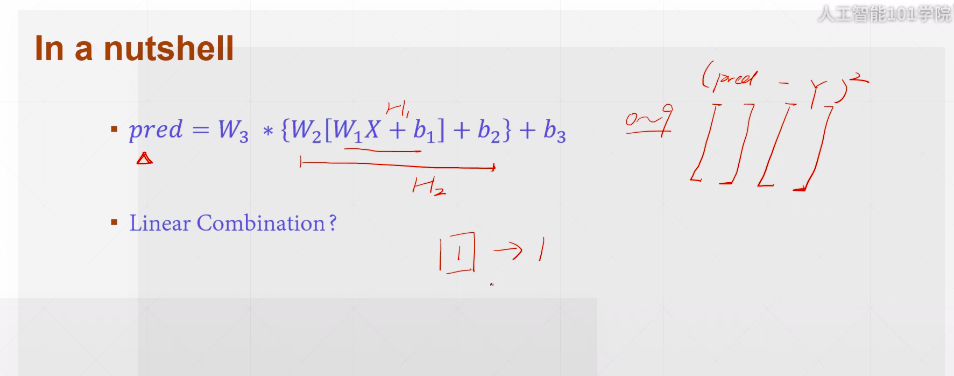
线性很难识别现实的数字问题,如1的字体、倾斜度等
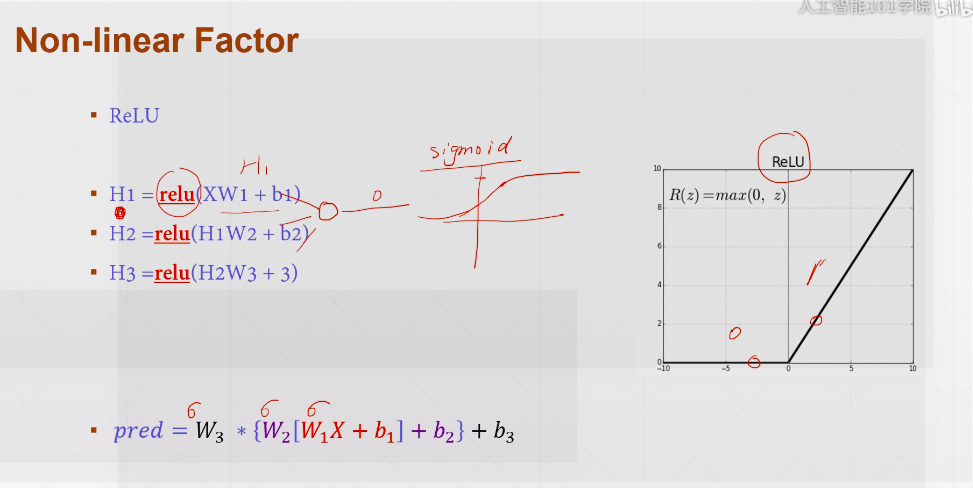
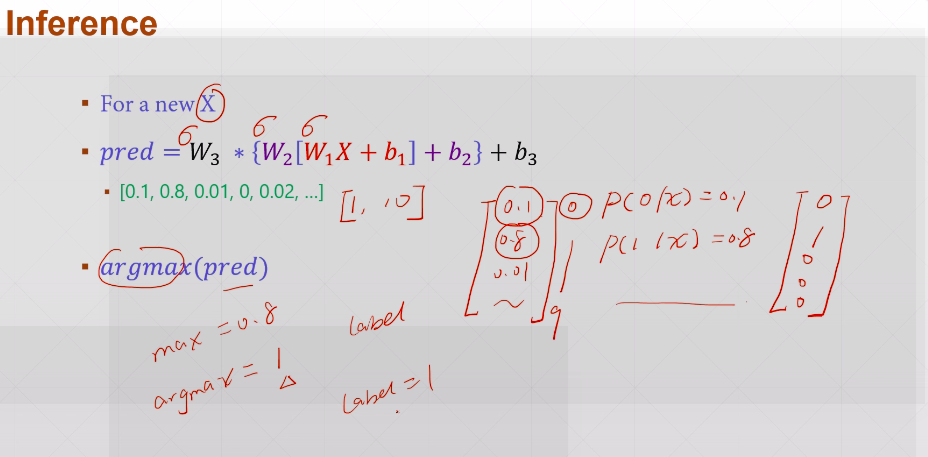
P(1|x)=0.8 #给定x ,label(也就是y)为1的概率为0.8 argmax(pred) #pred在的索引号
''' utils.py ''' import torch from matplotlib import pyplot as plt def plot_curve(data): fig = plt.figure() plt.plot(range(len(data)), data, color='blue') plt.legend(['value'], loc='upper right') plt.xlabel('step') plt.ylabel('value') plt.show() def plot_image(img, label, name): fig = plt.figure() for i in range(6): plt.subplot(2, 3, i+1) plt.tight_layout() plt.imshow(img[i, 0]*0.3081+0.1307, cmap='gray', interpolation='none') plt.title("{}: {}".format(name,label[i].item())) plt.xticks([]) plt.yticks([]) plt.show() def one_hot(label, depth=10): out = torch.zeros(label.size(0), depth) idx = torch.LongTensor(label).view(-1, 1) out.scatter_(dim=1, index=idx, value=1) return out
import torch
from torch import nn
from torch.nn import functional as F
from torch import optim#不加后面的optimizer = optim.SGD(net.parameters(), lr=0.01, momentum=0.9)会报错
import torchvision
from matplotlib import pyplot as plt
from utils import plot_image, plot_curve, one_hot
#from utils import plot_image, plot_curve, one_hot
batch_size = 512 #一次处理图片的数量
train_loader = torch.utils.data.DataLoader(
#download = True 当前没有mnist_data时,会自动从网上下载
#Normalize 正则化:使数据在0附近均匀分布,会提升性能到80%
torchvision.datasets.MNIST('mnist_data', train=True, download=True,
transform=torchvision.transforms.Compose([
torchvision.transforms.ToTensor(),
torchvision.transforms.Normalize(
(0.1307,), (0.3081,))
])),
batch_size=batch_size, shuffle=True)
test_loader = torch.utils.data.DataLoader(
torchvision.datasets.MNIST('mnist_data/', train=False, download=True,
transform=torchvision.transforms.Compose([
torchvision.transforms.ToTensor(),
torchvision.transforms.Normalize(
(0.1307,), (0.3081,))
])),
batch_size=batch_size, shuffle=False)
x, y = next(iter(train_loader))
print(x.shape, y.shape, x.min(), x.max())
#plot_image(x, y, 'image sample')



plot_image(x, y, 'image sample')
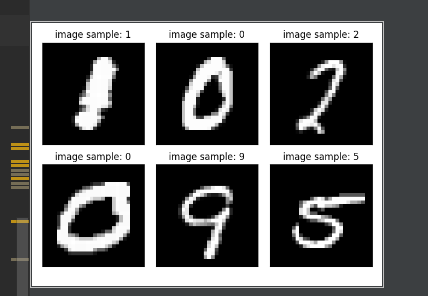
# step2 build network three layers class Net(nn.Module): def __init__(self): super(Net, self).__init__() # xw+b ''' 28×28,256 #256是按经验得到的 256,64#上层的输出是下层的输入 64,10#10个输出节点0~9:10分类 ''' self.fc1 = nn.Linear(28*28, 256) self.fc2 = nn.Linear(256, 64) self.fc3 = nn.Linear(64, 10) def forward(self, x): # x:[b,1,28,28] #h1 = relu(xw1+b1) x = F.relu(self.fc1(x)) #h2 = relu(h1w2+b2) x = F.relu(self.fc2(x)) # h3 = (h2w3+b3) x = self.fc3(x) return x
#step3 : Train net =Net()#顶格才可以 optimizer = optim.SGD(net.parameters(), lr=0.01, momentum=0.9)
train_loss = []
for epoch in range(3): #for必须顶格 for batch_idx, (x,y) in enumerate(train_loader): #x : [b,1,28,28] ,y :[512] #[b, 1, 28, 28] => [b,feature] x = x.view(x.size(0), 28*28) #[b,784] #=> [b,10] out = net(x) # [b,10] y_onehot = one_hot(y) loss = F.mse_loss(out, y_onehot)#out, y_onehot的均方差 optimizer.zero_grad()#清零梯度 loss.backward() #loss.backward() 计算梯度 # w' = w -lr*grad optimizer.step()#更新梯度
train_loss.append(loss.item())
if batch_idx % 10 ==0: print(epoch, batch_idx, loss.item())
plot_curve(train_loss)#更加形象的表示下降过程,顶格不要进入for的范围
# we get optimal [w1,b1,w2,b2,w3,b3]
/usr/bin/python3.5 /home/chenliang/PycharmProjects/train1/train.py 0 0 0.10039202123880386 0 10 0.09092054516077042 0 20 0.08298195153474808 0 30 0.07697424292564392 0 40 0.07104992121458054 0 50 0.06729131937026978 0 60 0.06352756172418594 0 70 0.059826698154211044 0 80 0.05679488927125931 0 90 0.05659547820687294 0 100 0.0517868809401989 0 110 0.05031196400523186 1 0 0.05097236484289169 1 10 0.045329973101615906 1 20 0.04571853205561638 1 30 0.04453044757246971 1 40 0.040699463337659836 1 50 0.041865888983011246 1 60 0.0409906730055809 1 70 0.04103473946452141 1 80 0.04012298583984375 1 90 0.040163252502679825 1 100 0.039349883794784546 1 110 0.03824656829237938 2 0 0.03849620744585991 2 10 0.037528540939092636 2 20 0.036403607577085495 2 30 0.034915562719106674 2 40 0.036890819668769836 2 50 0.03506477177143097 2 60 0.03299033269286156 2 70 0.03539043664932251 2 80 0.032174039632081985 2 90 0.031126542016863823 2 100 0.031167706474661827 2 110 0.03323585167527199 loss 总体是在不断下降的 Process finished with exit code 0

total_correct = 0 for x,y in test_loader: x = x.view(x.size(0), 28*28) out = net(x) #out: [b, 10] = > pred: 就会返回[b] pred =out.argmax(dim=1)#返回 out 维度值最大的索引 ,也就是10那个维度 ''' correct 当前预测对的总个数 pred.eq(y) :会进行比较,返回一个掩码,哪些是对等的,哪些不是。 pred.eq(y).sum() #对等的,即1的总个数 ''' correct = pred.eq(y).sum().float().item() total_correct += correct total_num = len(test_loader.dataset) acc = total_correct / total_num print('test acc: ', acc)
![]()
x,y = next(iter(test_loader)) out = net(x.view(x.size(0), 28*28)) pred = out.argmax(dim=1) plot_image(x, pred, 'test')#x:为图像 pred 为预测的数值 ,test 为名称
![]()



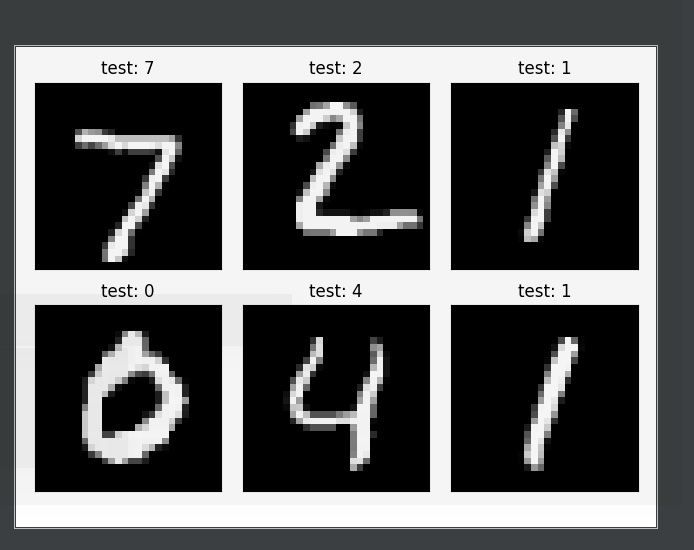

 浙公网安备 33010602011771号
浙公网安备 33010602011771号